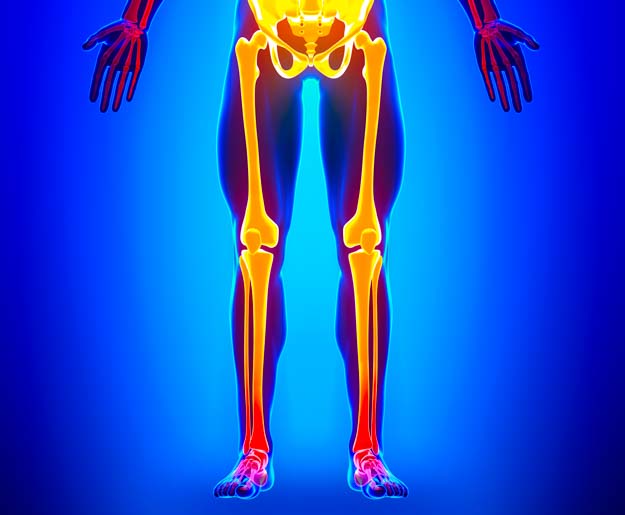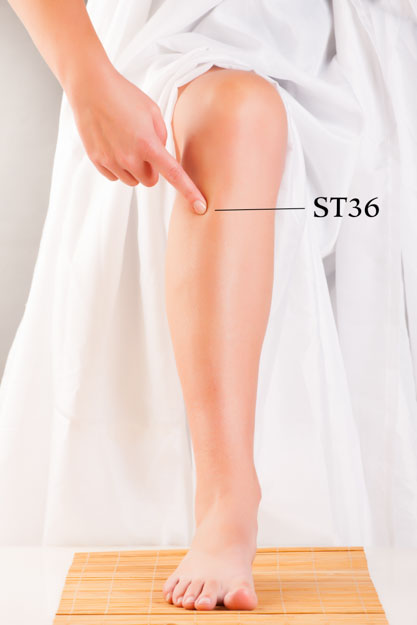Acupuncture and herbs alleviate restless leg syndrome (RLS). Researchers tested two forms of treatments and the findings indicate that acupuncture combined with herbal medicine is both safe and effective for the treatment of RLS. The total effective rate for acupuncture plus herbs was 95.24%. 
Restless leg syndrome (a.k.a. Willis-Ekbom disease) is characterized by a need to move the legs. The symptoms are typically worse at night and tend to lessen upon movement. An uncomfortable feeling in the legs including aching, pulling, itching, and a crawling sensation are characteristic of RLS.
The etiology of RLS is often considered unknown in biomedicine, however, several causes and exacerbating factors are known. Iron deficiency is common among RLS sufferers and is correlated with restless leg syndrome. Peripheral neuropathy, diabetes, Parkinson’s disease, and kidney diseases are correlated with RLS. Pregnancy related RLS typically occurs in the third trimester and usually resolves approximately one month after delivery. Several types of medications are linked to RLS including certain antiemetics, antipsychotics, antihistamines, and antidepressants.
According to Traditional Chinese Medicine (TCM) principles, RLS is closely related to Zang-Fu organ imbalances, especially in the liver, heart, and kidneys. Treatment principles including balancing yin and yang, promoting qi and blood circulation, nourishing the spleen, dredging the sanjiao meridian, and regulating the du and ren channels.
Two forms of acupuncture were tested for efficacy: body style acupuncture, eye region acupuncture. Both forms of acupuncture proved effective. The body style acupuncture included needling of the following acupoints:
- Baihui, DU20
- Sishenchong, extra
- Fengchi, GB20
- Anmian, extra
- Shanzhong, REN17
- Shenmen, HT7
- Neiguan, PC6
- Xuehai, SP10
- Zusanli, ST36
- Sanyinjiao, SP6
- Taixi, KD3
- Taichong, LV3
Mild reinforcing and reducing techniques were applied to acupuncture needles of 0.5 to 1.0 inches in length. Stimulation was applied to elicit deqi. Needle retention time was forty minutes per acupuncture session. Ten acupuncture treatments were applied to each participant in a period between ten and twenty days. Eye region acupuncture was applied to the following eye micro-acupuncture points: xiaojiao, liver, kidney, heart. The same frequency of treatment and session duration applied to the eye micro-acupuncture protocol of care.
 Herbal medicine was given to participants receiving either type of acupuncture. The herbal formula was based on Jia Wei Xiao Yao Tang and additional herbs were added based on diagnostics. The base formula included:
Herbal medicine was given to participants receiving either type of acupuncture. The herbal formula was based on Jia Wei Xiao Yao Tang and additional herbs were added based on diagnostics. The base formula included:
- Mu Dan Pi
- Zhi Zi
- Fu Ling
- Bai Zhu
- Dang Gui
- Bai Shao Yao
- Bo He
- Gou Qi Zi
- Ju Hua
- Shu Di Huang
- Shan Yao
- Shan Zhu Yu
- Ze Xie
- Bai Ji Li
- Zhen Zhu Me
- Gui Ban
- Quan Xie
- Zhi Me
- He Huan Pi
- He Shou Wu
Additional herbs were added based on two criteria. For patients with loose stool and undigested food, Chen Pi and Bai Bian Dou were added. For patients with sticky stool, herbs were added and subtracted from the formula. Gou Qi Zi, Shan Yao, and Shan Zhu Yu (Shan Yu Rou) were supplanted with Che Qian Zi, Huang Lian, and Mu Xiang. The herbal formulas for all patients were brewed each day and served in the morning and at night.
The high total effective rate of 95.24% for acupuncture plus herbal medicine treatments indicates that this approach to care is effective for patients with RLS. Acupuncture continuing education research focusing on additional TCM (Traditional Chinese Medicine) protocols of care will help to codify acupuncture and herbal medicine standards. The influences of du, taiyang, and shaoyang channel blockages on restless leg syndrome are important factors according to TCM principles. Qi and blood stasis affecting these channels due to disorders such as lumbar disc compression, IVF (intervertebral foramina) encroachment, immobility of the sacroiliac joint, and other local concerns affecting acupuncture channels of the legs warrants additional research.
References:
Qin HJ. (2014). Eye acupuncture and combined acupuncture and medicine in the treatment of 23 patients with restless legs syndrome. World Latest Medicine Information. 14(36).
Wang XD. (2006). Restless legs syndrome categorization, diagnosis and treatment. Chinese Journal of Geriatrics. 25(7): 488-490.


